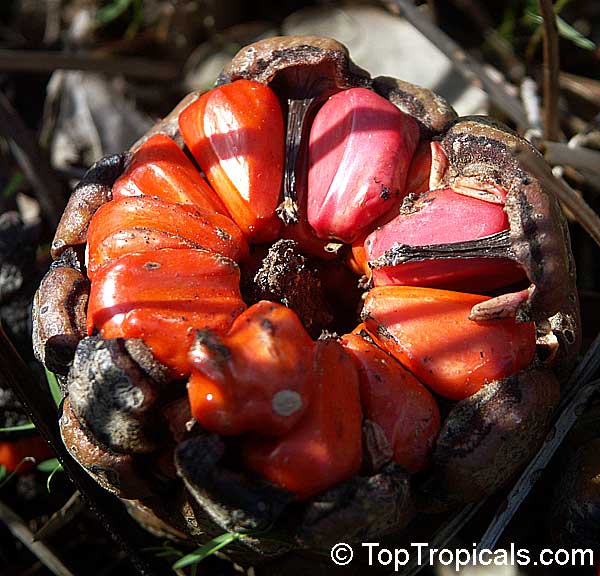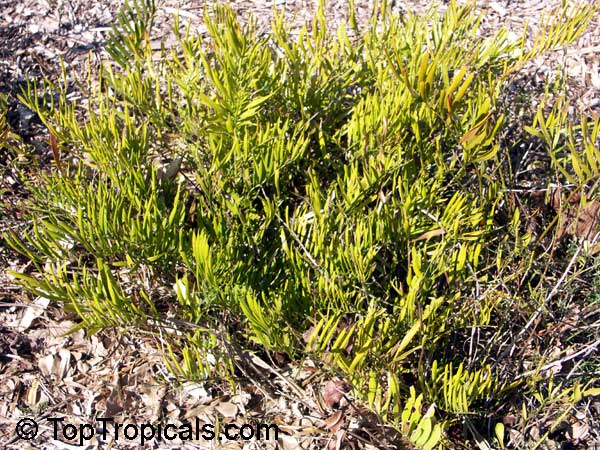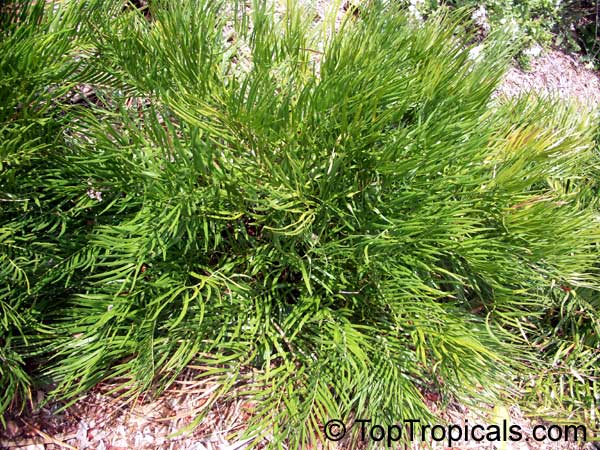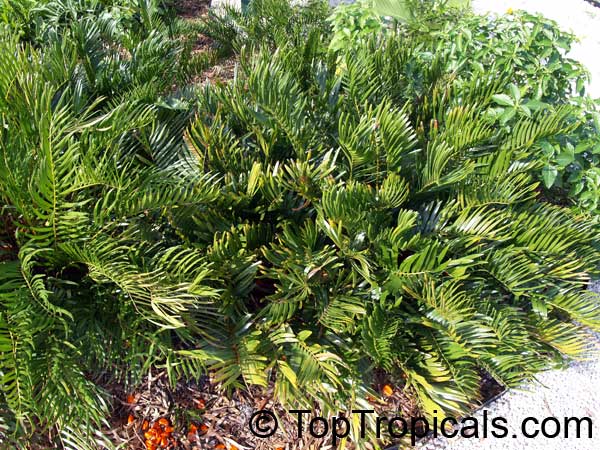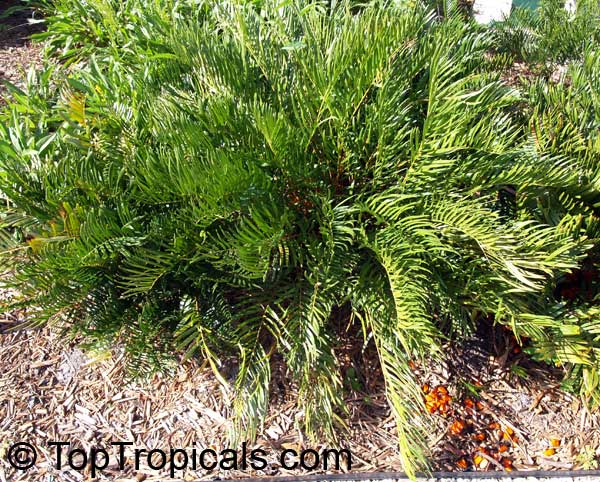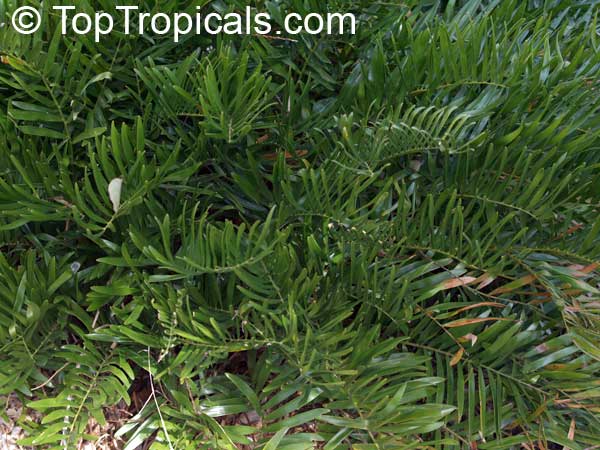Zamia integrifolia (Coontie)
Top Tropicals Plant Encyclopedia
Botanical names: Zamia integrifolia, Zamia floridana
Common names: Coontie, Coontie Palm, Koonti
Family: Zamiaceae
Origin: South of the USA, western Cuba, Puerto Rico, and the Cayman Islands









Zamia integrifolia, commonly known as Coontie or Koonti, is a small, woody cycad native to the southeastern United States, the Bahamas, and the Caribbean. It is also found in Grand Cayman and the Dominican Republic, but it is believed to be extinct in Puerto Rico. This plant is prized for its medicinal properties and is used to treat digestive and urinary tract disorders, as well as to promote wound healing. It is also popular as an ornamental groundcover due to its low-growing habit and ability to thrive in a variety of soils, including seaside and salt-tolerant areas. In cold regions, Zamia integrifolia can be grown in pots and brought indoors when temperatures drop. It requires full sun or semi-shade and moderate watering.
Zamia integrifolia is found in a variety of habitats with well-drained sands or sandy loam soils and prefers filtered sunlight or partial shade. It is a hardy plant that is easily grown in sub-tropical and warm temperate areas. However, it is becoming increasingly uncommon due to intensive land use. This plant is poisonous and produces a toxin that affects the gastrointestinal tract and nervous system. The toxin can be removed by careful leaching, and the roots and half-buried stems were traditionally used by Native American people for their sago-like starch. The root is typically prepared for food by grinding it using a wooden mortar and pestle, and the resulting flour is used in various dishes.
Plant care: Plant in a location that receives full sun or semi-shade and has well-drained sandy soil. Water moderately, making sure not to overwater. In cold regions, the plant can be grown in pots and brought indoors when temperatures drop. Protect the plant from strong winds, as they can damage the leaves. If necessary, prune damaged or diseased leaves to maintain a healthy appearance.
Because Zamia integrifolia is poisonous, take care when handling the plant and keep it out of reach of children and pets.
